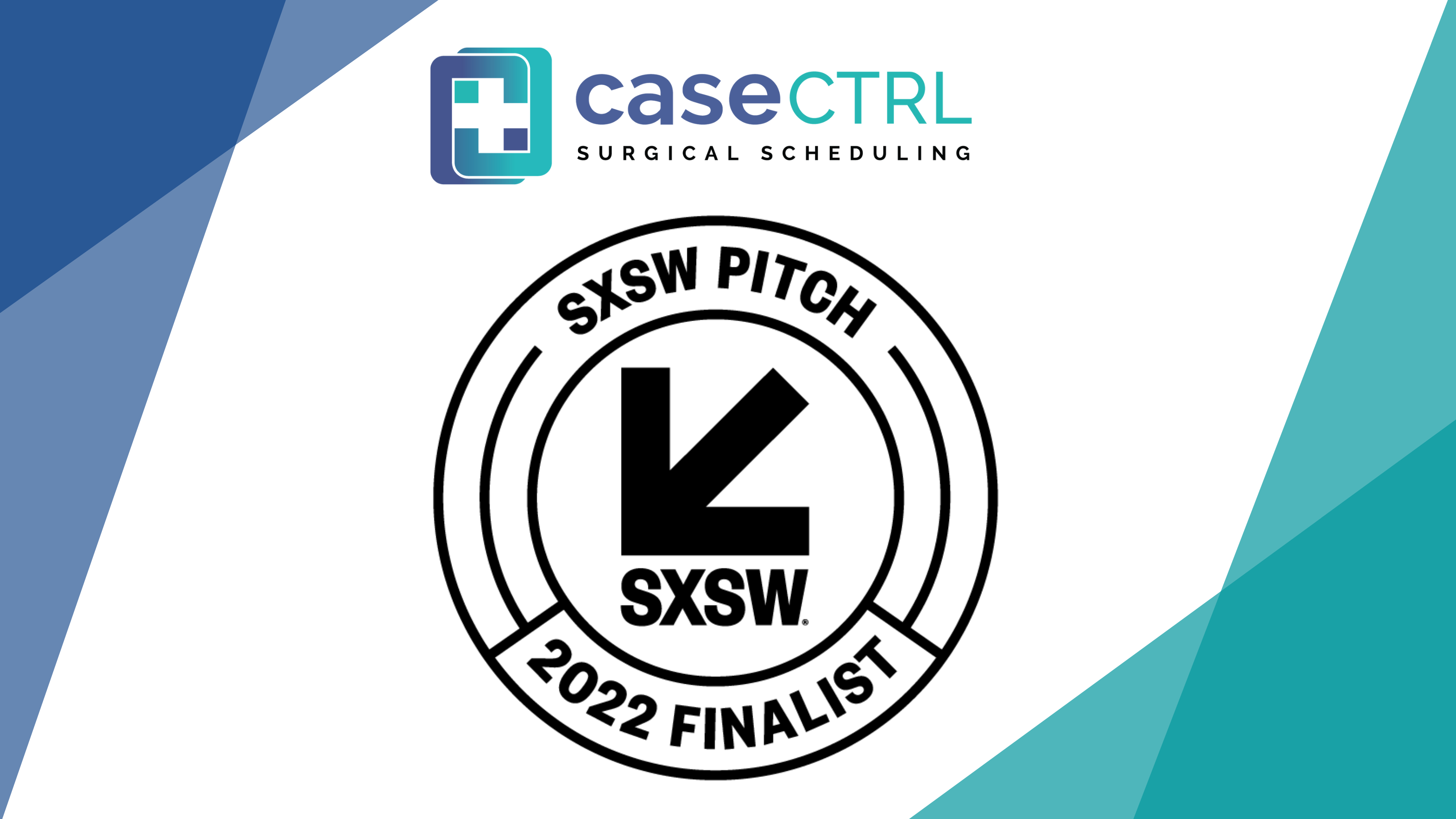Outpatient surgery in the U.S. is projected to grow to 144 million cases (or $1 trillion of the market) by 2023, with declining reimbursement and more administrative bureaucracy to deliver such care. To keep pace with the growing demand in these conditions, healthcare practices will have to change the way that surgeries are scheduled. By abandoning old paper-based scheduling processes, practices can break down information silos and, as a result, increase OR efficiency. For more insights on the ideal time to use surgical scheduling software, and tips to ensure the best ROI, check out this guide.
To improve the surgery scheduling process, administrators and owners may examine the block schedule design, case cancellation etiology, or the competence of vendors or nursing staff, but until the nuts and bolts of scheduling—the forms, processes, and communication channels—are uniform and effective, it will all be guesswork and left to the whims and skills of individual surgical schedulers. Implementing the right surgery scheduling software platform illuminates data that can guide informed decisions for improvements.
Lack of accurate, accessible data isn’t the only problem solved when by switching from a paper-based system to software. Let's review some of the other problems you can eliminate. Do any of these issues sound familiar to you?
1. Too Much Depends on One Person
The scheduler is the one source for almost every stakeholder in the OR to know what happens and who should be there. Imagine juggling physician requests for OR time, last-minute cancellations, physician preferences, equipment order confirmations, and patient education while trying to provide clarity to physicians and nurses who need definite answers right now. The sheer demands can create errors and built-in inefficiencies like habitually padding blocks to prevent overtime, for example.
Physicians using paper forms often alter them with pages of appended handwritten notes that only their scheduler can decipher. Many schedulers keep important details in their working memory: which rooms have which equipment, which staff needs to be done with one assignment and move on to another at what time, how the site procedures are grouped in which OR, etc. As a result, they are often over-extended and irreplaceable.
The best schedulers can do even more with electronic forms and communication processes. It multiplies their presence and demystifies their highly specific knowledge, which means their physical presence is not always required to provide clarity.
2. Redundant Communication
Consider this example: Geisinger Health System in Pennsylvania was scheduling 91 ORs with a physical wall magnet board. “Secretaries hand-wrote assignments that were transcribed onto magnetic strips.” Their handwritten notes could be expounded upon—in this case, extra information was added with a dry erase marker. When data lives in one physical place like this, changes are only seen there, or, worse, not at all.
Geisinger looked for another solution when they noticed that quality of patient care was suffering. Assignments were changing frequently and requiring multiple communications to find the anesthesiologists and nurses. Patients and staff were frustrated too often. Although they looked for a way to use an electronic board (less of a dramatic shift), they settled on the flexibility of a web-based, interactive interface that emailed and text messaged assignment changes.
The physician/administrator team said, “A staff member can [now] rapidly identify and contact the appropriate CRNA, anesthesiologist, or circulating nurse with any questions or notify them when a patient is ready for the OR. Giving this information to the staff has put them in control of information and reduced phone calls and pages.” They also noted that up-to-the-minute assignment information cut down on phone calls to providers and the OR control desk. OR personnel relationships improved. “Perhaps most importantly, the communication improvements have strengthened patient safety,” the team stated. “Nursing staff in the PACU and same-day surgery unit know who is taking care of patients, and they can more quickly reach the appropriate provider. The reduction in wait time for care in the preoperative area reduces delays and improves the patient experience.”
Implementing a shared, real-time surgery scheduling software interface has a unifying effect on the entire OR team. And this is just the tip of the iceberg. Surgery scheduling encompasses many moving parts well before the day of surgery. Software that works not just on the day of surgery, but in advance, can help eliminate many of the questions surrounding surgical cases that could have been handled well in advance to improve preparation and efficiency.
3. Physician Stress and Paperwork Fatigue
The last thing a physician needs is a surprise in the schedule and more paperwork. According to the Medscape Physician Compensation Report 2020, physicians spend an average of 15.6 hours per week on paperwork and administration. This is time they aren’t spending with patients. Medscape’s 2018 Physician Compensation Report found that 84% of physicians spent between just 9 and 24 minutes with each patient individually—a modest amount of time for a life-changing surgery. Paperwork consumes much of the time that surgeons could establish rapport and give confidence to patients, increasing satisfaction and positive perceptions.
A 2017 OR Manager piece explains why physicians are frustrated by physical scheduling processes:
- The actual procedure description used by the surgeon may not be accurately reflected by the surgery facility descriptors.
- The scheduling codes may not accurately reflect the case being performed. and “unless the scheduler works regularly with the surgeon, most need a clear directive that is both precise and comprehensive.”
- Gross inaccuracies in scheduling are oftentimes resolved when surgeons have access and visibility into the timing. (In fact, a poor use of block time can, in fact, be a signal of outdated scheduling processes.)
Electronic forms can capture the diversity of cases and needs of each surgeon. A point-of-care scheduling tool allows real-time notes to be added and shared with others to accommodate changes. This allows the surgeon to readily share relevant knowledge and preferences with PACU staff, nurses, equipment vendors, and schedulers.
4. Third-Party Confusion
What if the wrong equipment goes to the wrong room? Patients are unaware of insurance coverage limitations until the day of surgery? These crucial issues often stem from outdated scheduling and communication practices.
The amount of paperwork necessary to communicate with third parties can be massive — a hospital profiled in Health IT Outcomes for optimizing patient services had previously filled out 100 faxes per day related to scheduling. Standardizing the forms and communication procedures to third parties such as insurance companies, referring physicians’ offices, and equipment vendors can be automated and streamlined with scheduling software. Reminders, auto-populated forms, automatically triggered messages, and read receipts can replace the chaos of the hand-written-to-fax system.
Additionally, block time utilization is naturally affected when third parties get the wrong information, lose it, or don’t open their messages. Hospitals and ASCs with block schedules have little margin for error on the first-case start time. A recent study from Pediatric Quality and Safety noted that reviews found 50 to 85% of first cases don’t start on time and are delayed by around 30 minutes on average. Logistics and communication errors are common culprits and can be mitigated by scheduling software and web-based forms.
5. Patients Can Be Unpredictable and Hard to Reach
Patients are sometimes seen as the wildcard of the surgery scheduling process. Still, there is evidence that with more regimented communication, no-shows and delays can be improved dramatically. Paper- and email-based processes can easily be missed or create confusion.
According to a 2020 research piece from Risk Management and Healthcare Policy, endoscopy no-shows can range from 12 to 24%. No-shows are a persistent revenue loss for surgical practices. The author states “Forgetting about the appointment, patient scheduling conflicts and miscommunication were found to be the most common causes of patient no-shows in various healthcare settings.” The same study cited previous research in which no-shows were reduced from 20% to around 7% simply by using pre-scheduled telephone reminders.
Surgery scheduling software automates patient messaging through email, text, or phone, depending on the patient’s preferences. Receiving read receipts will give staff some notion as to the patient’s level of engagement. Artificial intelligence in surgery scheduling software can be leveraged to identify patients at high risk of non-compliance or now show, and alert staff to intervene and potentially answer critical questions.
Improving Your Process
The OR is a dynamic environment —even if everything else is under control, every surgery can create changes. Bottlenecked paper scheduling cannot cope with changes quickly. Imprecise forms and high pressure adjustments cause errors. With modern scheduling software, automated processes can ensure scheduling keeps pace with the changes. For example, automated messages can be triggered by any change in the schedule to all relevant parties.
Shifting to surgery scheduling software ultimately empowers staff to be more responsive. To remain competitive, hospitals and ASCs have to find ways to do more surgeries more efficiently with better patient satisfaction. Click here to learn more about how CaseCTRL goes beyond replacing paper processes and actually multiplies scheduling efforts.







































